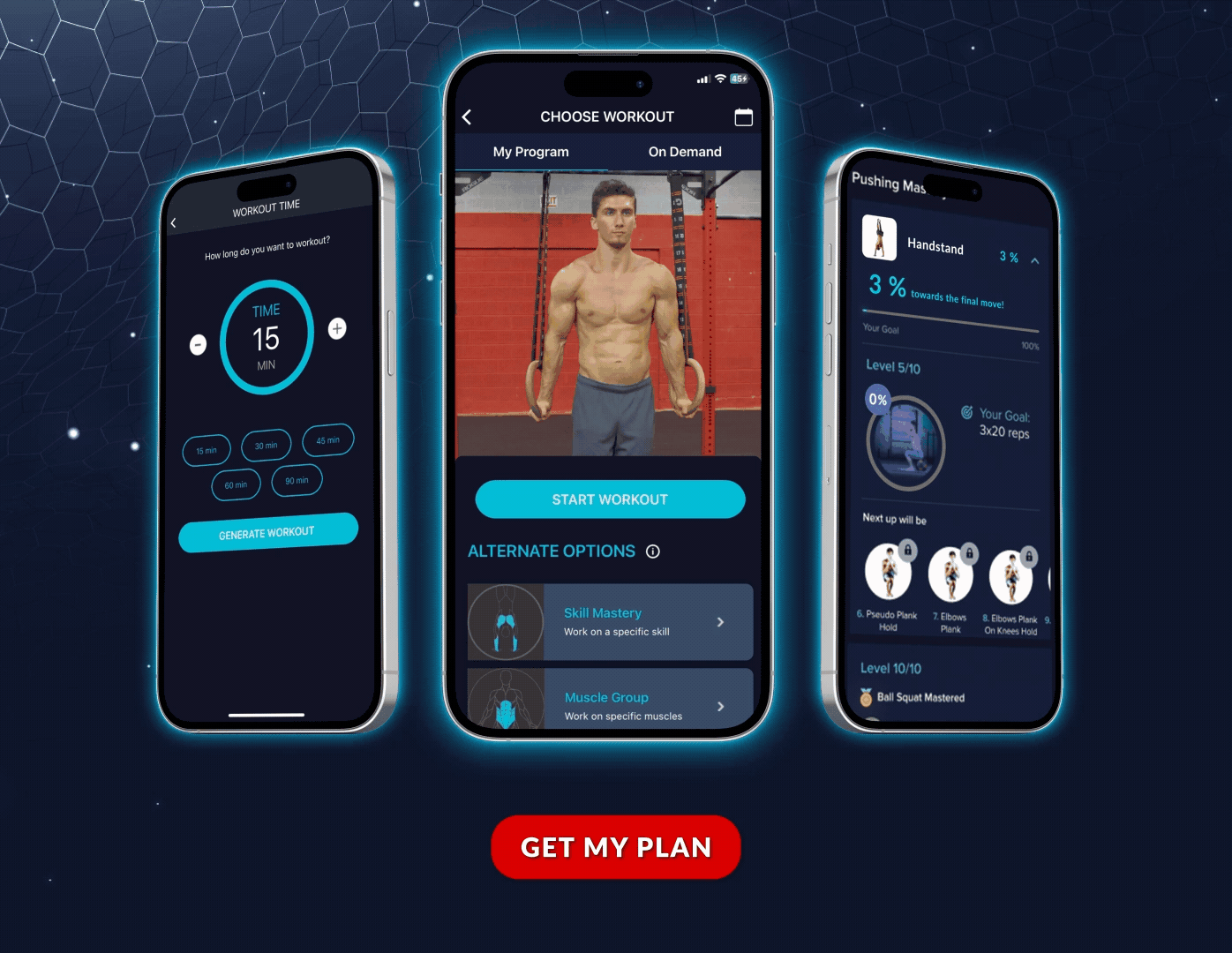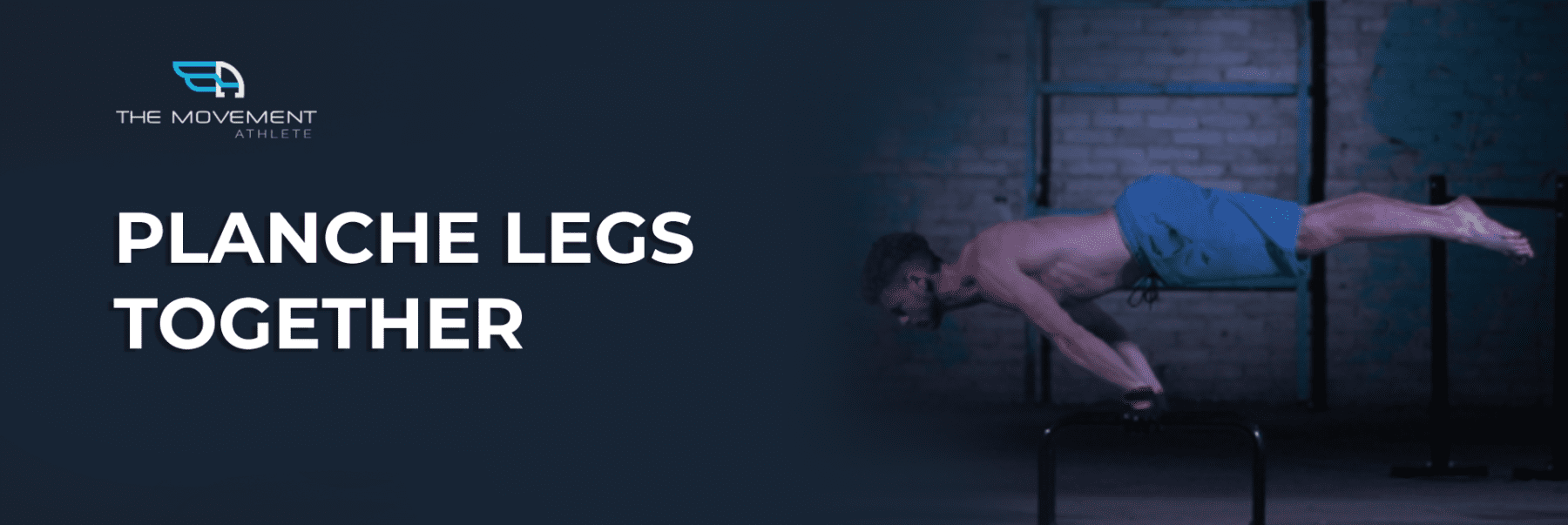

Planche Legs Together: The Ultimate Elite Calisthenics Skill Mastery Guide for 2024
📖 Read Time: 8 Minutes | 🎯 Difficulty: Elite Level | 📅 Updated: September 2024 | ⚠️ Prerequisites Required
Join the tribe of Movement & Calisthenics Athletes
People just like you that are working with their own body weight to get strength, lose fat, build muscle, recover from injuries and live their best lives!
Do you want to set a high-level goal in your calisthenics journey? The planche legs together is a mesmerizing skill that represents the pinnacle of elite strength, technique, and body control in bodyweight training.
Here’s the harsh reality: Most people who attempt the planche legs together fail because they skip the foundational requirements and jump straight to the advanced position. This leads to injury, frustration, and years of wasted training time.
This comprehensive guide will show you exactly how to progress safely to this elite-level skill, what prerequisites you absolutely must master first, and the precise technique requirements for success.
⏱️ Quick Planche Legs Together Reference Guide
| Aspect | Requirement | Training Focus |
|---|---|---|
| Prerequisites | 10+ sec straddle planche | Master easier progression first |
| Key Muscles | Shoulders, core, back | Scapula protraction strength |
| Form Focus | Straight body line | Posterior pelvic tilt |
| Timeline | 6+ months from straddle | Consistent daily practice |
🎯 What makes planche legs together so difficult?
The planche legs together is exponentially harder than straddle planche due to leverage physics. With legs together, your center of mass shifts, requiring significantly more shoulder strength, scapula protraction power, and core stability to maintain the horizontal body position.
📋 Complete Guide Contents
• When It’s Safe to Attempt
• 9 Key Benefits You’ll Gain
• Perfect Form & Technique
• Essential Coaching Points
• Common Mistakes to Avoid
• Training Progression Plan
🔥 What is the Planche Legs Together?
It’s a static exercise where you are fully supported by your arms (like in a handstand), but your full body is parallel to the ground – making this exercise completely more difficult than a handstand or even the straddle planche variation.
In order to maintain the balance in this position, you must lean forward making your hands aligned with your hips as your feet are hovering in mid-air with legs pressed tightly together.
Contrary to the popular notion that the exercise relies on your core to lift your lower body up, the leaning motion with your shoulders is the key to achieving and holding the position. However, the planche still requires tremendous core, back, and front body strength.
It’s a complete exercise that displays phenomenal upper body strength and body control. If you want to set a goal, you might as well set it high and choose the planche legs together.
⚠️ How to Know When It’s Safe to Attempt
Why this matters: Attempting planche legs together without proper prerequisites leads to injury and training setbacks that can last months.
There’s no other way around it. You must first master a solid 10+ second straddle planche. The seemingly minor change in leg position has a drastically major impact on the difficulty of the exercise.
Remember that calisthenics progression works by changing leverage. The planche legs together is a high-level skill that requires immense technique and strength. You must first learn the easier variation for faster, safer, and better progress.
🏆 Real Member Success: Elite Planche Achievement
“I spent 2 years trying to force planche legs together without mastering straddle first. Once I followed TMA’s progression and built my 15-second straddle planche, I achieved legs together in just 6 months!”
– Marcus K., 28, Personal Trainer
🌟 9 Incredible Benefits of Planche Legs Together
1. Stronger straight arm strength – Develops incredible pushing power in locked-arm positions
2. Enhanced scapula protraction – Builds the specific shoulder strength needed for all advanced skills
3. Superior body control and awareness – Develops precise muscle coordination and proprioception
4. Bulletproof core strength – Strengthens entire core in an integrated, functional way
5. Enhanced mind-body connection – Requires intense focus and body awareness
6. Powerful shoulder stability – Strengthens shoulders in the most challenging position
7. Perfect full body tension – Teaches complete muscular integration
8. Gateway to elite skills – Opens the door to maltese and other elite-level movements
9. Incredible achievement factor – Look absolutely phenomenal floating in mid-air with perfect control!
🎯 Perfect Technique: How to Perform
Step 1: Begin with feet flat on the floor, bend forward placing palms on the floor shoulder-width apart
Step 2: Protract scapula and engage core with posterior pelvic tilt
Step 3: With arms straight and elbows rotated forward, lean forward and push through shoulders. Keep the legs pressed tightly together
Step 4: Slowly raise your lower body until your legs are parallel to the floor
Step 5: Hold for specified time while maintaining perfect body line
🔍 Critical Form Focus Points
Scapula Protraction – The Foundation
The key to a stronger planche (and proper form) is strengthening your scapula protraction. This means being able to fully push your body away from the ground to maintain the planche position.
If you’re unable to hold strong scapula protraction, this indicates weaknesses in connecting muscles such as the traps, serratus anterior, or pecs. Strengthen every part specific to the planche goal.
Straight Lower Back
Common weakness areas when holding the planche include the lower back. This shows up as visible arching of the lower back or inability to hold the position because the lower body feels “too heavy”.
This can result in lower back injury if not addressed immediately. Train your lower back specifically for planche and use easier progressions where you can hold correct posterior pelvic tilt.
Externally Rotated Elbows and Locked Arms
Not locking out the arms is basically cheating. While it’s not easy on the joints, locked arms are the proper form for planche regardless of progression level.
Rotating the elbows outward helps keep your arms straight throughout the movement. Continue training basic planche exercises like planche leans to build stronger joints.
💪 Essential Coaching Points
Starting Position:
• Scapula protracted
• Core engaged
• Posterior pelvic tilt
• Shoulders depressed
Movement Position:
• Straight arms locked out
• Elbows facing forward
• Scapula protracted
• Legs pressed tightly together
• Feet pointed
• Posterior pelvic tilt maintained
• Core fully engaged
• Back perfectly straight
• Shoulders depressed
• Hands aligned almost to hips
Finish Position:
• Slowly lower to tucked L-sit position
• Maintain control throughout descent
• Never collapse or drop suddenly
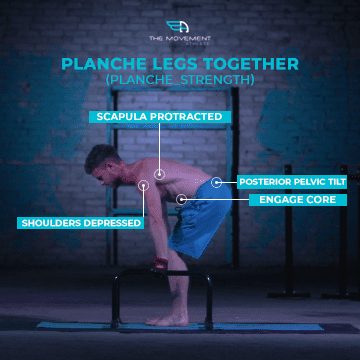
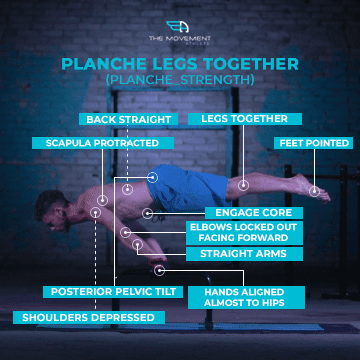
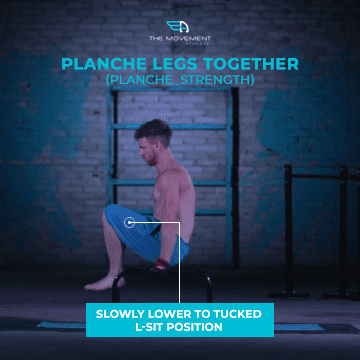
⚠️ Critical Mistakes to Avoid
Why this matters: These mistakes cause 90% of planche training failures and can lead to serious injury.
1. Skipping straddle planche mastery – Attempting legs together without 10+ second straddle hold
2. Weak scapula protraction – Not developing the foundational shoulder strength first
3. Lower back arching – Failing to maintain posterior pelvic tilt and straight spine
4. Bent arms – Cheating by not maintaining locked elbow position
5. Rushing progression – Not spending enough time building strength in easier variations
6. Inadequate warm-up – Attempting the skill without proper shoulder and wrist preparation
❓ Frequently Asked Questions
How long does it take to learn planche legs together?
From a solid straddle planche, it typically takes 6-18 months of consistent training to achieve planche legs together. The timeline depends on your current strength level, training consistency, and body mechanics.
Can I skip straddle planche and go straight to legs together?
No, this is extremely dangerous and ineffective. You must master a 10+ second straddle planche first. The leverage difference makes legs together exponentially harder, and attempting it without prerequisites leads to injury.
What muscles does planche legs together work?
Planche legs together primarily targets anterior deltoids, serratus anterior, pectorals, triceps, entire core, and back extensors. It requires exceptional scapula protraction strength and full-body tension.
📊 About This Training Guide
This planche legs together guide was developed using biomechanical analysis and training data from elite calisthenics athletes. The progression methodology has been tested and refined through The Movement Athlete’s community of advanced practitioners.
Our approach prioritizes safety and systematic progression, ensuring athletes develop this elite skill without injury while building a foundation for even more advanced movements.
Ready to Master Elite Skills?
Join athletes who’ve mastered planche legs together through systematic progression and proper prerequisite development
💪
Safe Progression
Master prerequisites before advancing
🎯
Expert Guidance
Biomechanically optimized training
🏆
Elite Achievement
Master the ultimate planche skill
⭐ Used by elite calisthenics athletes worldwide • No credit card required
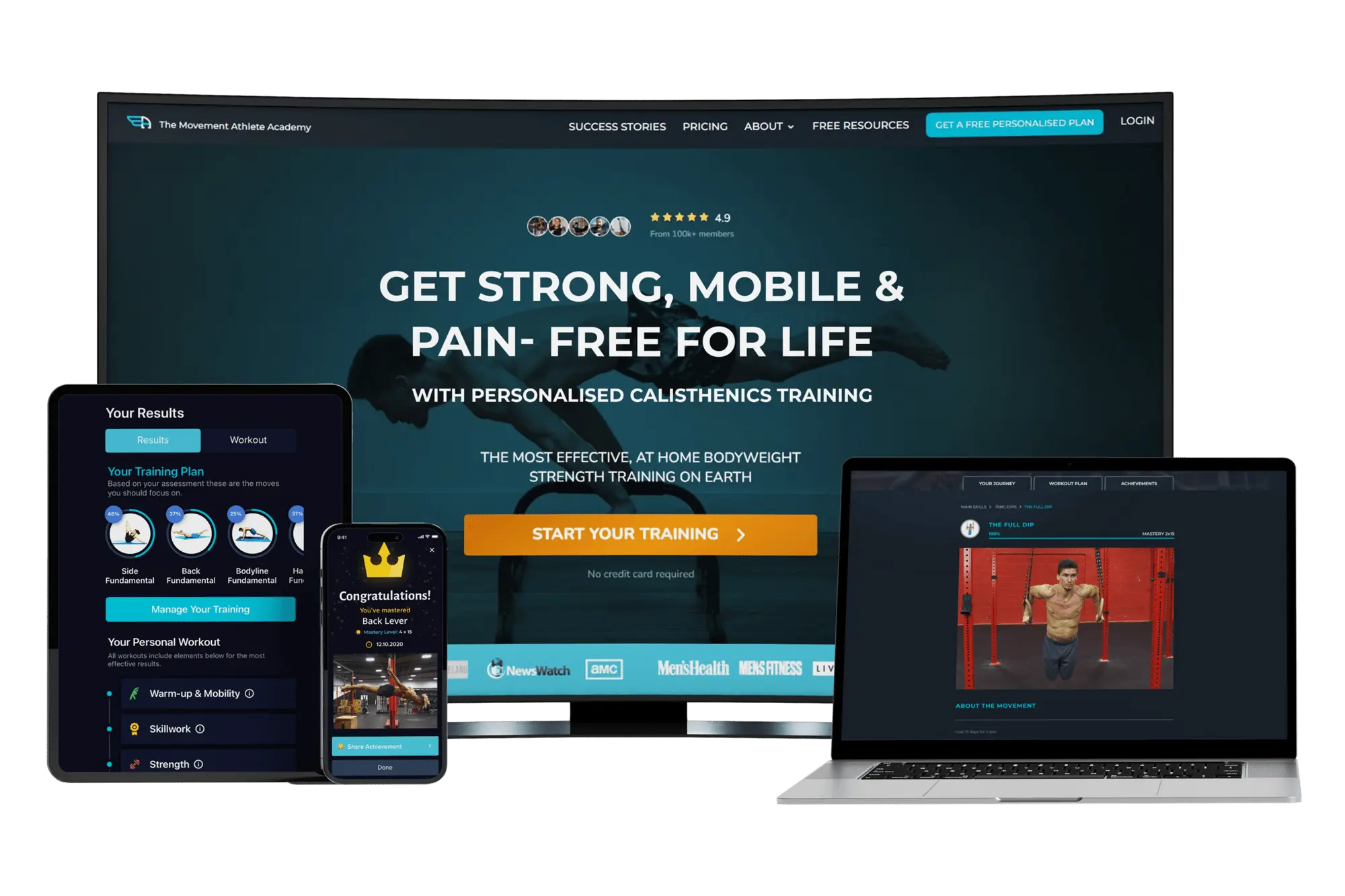
🔥 Elite Skill Assessment Available Now
Stop Training Elite Skills the Wrong Way
Get Your Personalized Planche Progression Plan in 5 Minutes
⭐⭐⭐⭐⭐ Used by elite athletes who’ve mastered planche legs together
✅ Reveals your exact prerequisite gaps
✅ Safe progression path to elite skills
✅ Personalized training plan that adapts
✅ Prevents injury from premature attempts
✅ Masters fundamentals before advancing
No credit card required • 5-minute assessment • Safe progression guaranteed
“Took the assessment and discovered I wasn’t ready for planche legs together. Built my straddle for 8 months first – now I have both skills!”
– Sarah M., 29, Engineer
“The progressive approach saved me from injury. Following the prerequisite path, I achieved my 15-second planche legs together safely!”
– Michael R., 45, Dad of 3
“As a gymnastics coach, I use TMA’s systematic approach with all my athletes. The planche progression is scientifically sound and injury-free.”
– Jennifer L., 34, Coach
